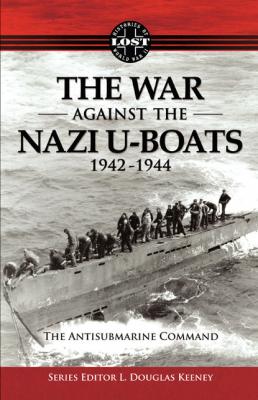The War Against The Nazi U-Boats 1942 – 1944. L. Douglas Keeney
Чтение книги онлайн.
Читать онлайн книгу The War Against The Nazi U-Boats 1942 – 1944 - L. Douglas Keeney страница 8

The first formal step in setting up the new command was taken by General Marshall. On 14 September, he wrote to Admiral King:
Experience with the First Bomber Command in antisubmarine operations since March indicates that the effective employment of air forces against the submarine demands rapid communications, mobility, and freedom from the restrictions inherent in command systems based upon area responsibility.
Accordingly, he proposed to create the “First Antisubmarine Army Air Command,” which would absorb those portions of the I Bomber Command engaged in antisubmarine work. Control of the new unit would be centralized in the War Department in order that it might “be promptly dispatched” to successive zones of submarine activity. It would begin operation in Atlantic coastal waters, the Gulf and the Caribbean; its expansion to other areas “will depend upon the planes available.” Operations “naturally will be under the operational control of the sea frontier concerned.” The closest cooperation with the Navy, especially in the transmission of intelligence which could only be compiled through naval sources, would be essential to the proper functioning of this antisubmarine command. Provision would therefore have to be made for liaison between “our immediate headquarters.”
Admiral King replied at once, concurring in general, but expressing his belief that “the preferable method” was allocation of air units to sea frontiers, changing the allocations from time to time and from frontier to frontier as the exigencies of the war dictated. He would, he said, continue to exercise control ever Army planes through the commander of the various sea frontiers. To provide the close liaison suggested by General Marshall, he had designated Adm. P.N.L. Bellinger, Deputy Chief of Staff of the US Fleet, as liaison officer.
On 23 September, General McNarney instructed General Arnold to organize the First Antisubmarine Army Air Command, using the I Bomber Command as cadre. The principal mission of the command was to be “the location and destruction of hostile submarines.” As a necessary means to this and it had the secondary mission of training crews and developing devices and techniques. The command was to be directly under the CG AAF, although operations were to be conducted under naval control. It was not to be limited by the boundaries of defense areas, and its operations in areas other than the NDC or SDC were to be coordinated with OPD, WDGS. It was activated 15 October 1942 under the designation, Army Air Forces Antisubmarine Command.
The mission of the command was elaborated in subsequent orders which gave considerable latitude to its activities. It was to attack hostile submarines “wherever they may be operating.” Although operations on the Eastern and gulf Sea Frontiers were to be conducted under the tactical control of Navy officials, direct control over the command was vested in the office of the Commanding General, AAF; and provision was made for future transfer of units to extra-continental areas on a detached service base. General Larson, as Commanding General, was responsible for operations under the Director of Military Requirements, through the Director of Bombardment, but matters of “policy, broad plans, and the development of new weapons and equipment” remained with the Commanding General, AAF.
Such were the plans and orders under which the Antisubmarine Command was organized and under which it operated during the short course of its restless career.
Конец ознакомительного фрагмента.
Текст предоставлен ООО «ЛитРес».
Прочитайте эту книгу целиком, купив полную легальную версию на ЛитРес.
Безопасно оплатить книгу можно банковской картой Visa, MasterCard, Maestro, со счета мобильного телефона, с платежного терминала, в салоне МТС или Связной, через PayPal, WebMoney, Яндекс.Деньги, QIWI Кошелек, бонусными картами или другим удобным Вам способом.